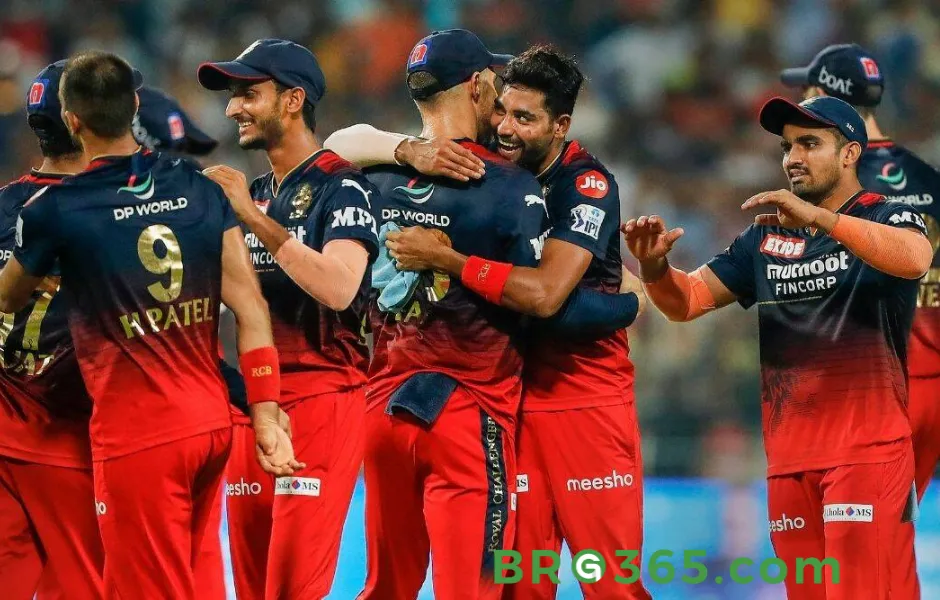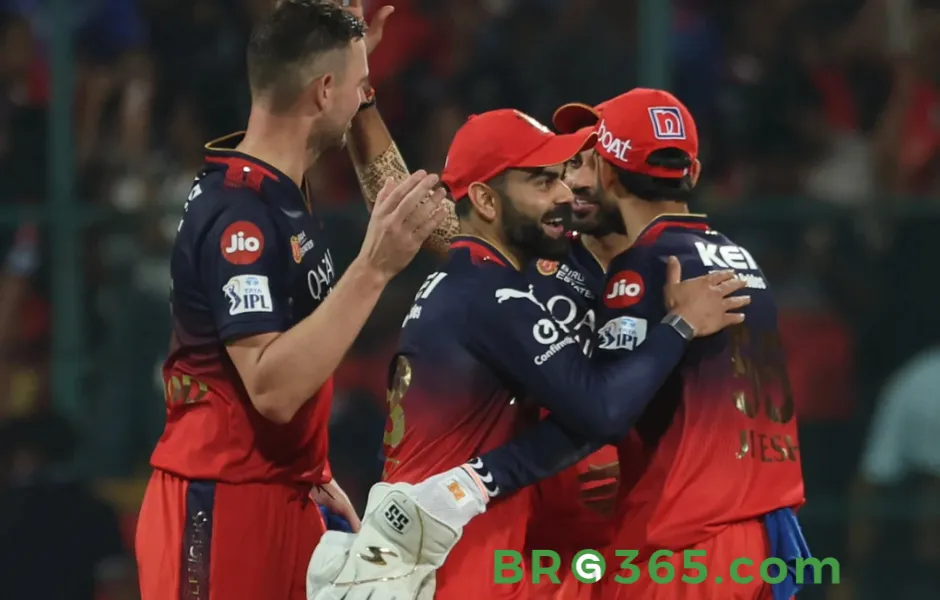Royal Challengers Bangalore have long defined IPL excitement with their aggressive race strategy.
This deep dive explores how their tactics evolved from reckless power-hitting to a refined, title-contending approach in 2025—one that could finally end their trophy drought.
Follow BRG365 for exclusive cricket insights.

Aggression Without Tactical Depth (2008–2016)
RCB’s race strategy began as a celebration of power-hitting, led by Chris Gayle, Virat Kohli, and AB de Villiers.
Their mantra: Swing hard, worry later. This era produced breathtaking cricket but lacked structure, as seen in the 2016 IPL final—a 200-run defeat where they chased 209 but collapsed after a 114-run opening stand.
Key Flaws:
-
No Plan B: Over-reliance on Gayle’s explosive starts (175 in 2013) and de Villiers’ “360 cricket” left the middle order exposed.
-
Defensive Gaps: Bowling relied on inconsistent all-rounders, leading to an average economy rate of 8.8 from 2011–2016.
-
Classic Example: In the 2016 final, Shane Watson conceded 24 runs in the final over, highlighting a lack of death-bowling strategy.
Key Stats
|
Season |
Average Runs |
Playoff Win % |
Trophy Wins |
|---|---|---|---|
|
2011–2016 |
188 |
35% |
0 |
Adding Discipline to Fire (2017–2020)
After years of heartbreak, RCB shifted to a “controlled aggression” model, blending their attacking DNA with tactical awareness.
This era saw the rise of spin wizard Yuzvendra Chahal (22 wickets in 2019) and a focus on middle-order stability.
Read More: RCB’s 2011 IPL Final Defeat Sparked Their Golden Era? Still Debate
Tactical Shifts
-
Spin Dominance: Chahal and Washington Sundar formed a spin duo that conceded just 6.8 runs per over in 2019, up from 8.2 in 2016.
-
Pace Bowling Upgrade: Signing Josh Hazlewood and Mohammed Siraj improved death-over economy from 9.5 to 8.1.
-
Mid-Innings Control: Kohli shifted to a more measured approach, averaging 55 runs per innings while maintaining a 135 strike rate.
Turning Point: 2019 Semifinal vs. CSK
RCB restricted CSK to 168 using spin pressure, then chased down the target with de Villiers’ calm 54 (36).
It showed they could balance attack and defense—a crucial step toward maturity.
2025’s Revolution: Data-Driven

Today’s RCB combines their historic aggression with modern analytics, creating a race strategy built for consistency and adaptability.
Here’s how they’ve refined their approach.
Impact Player Tactics
With the 2025 IPL introduction of impact players, RCB have used these tactical substitutions to tilt games in their favor. For example, against
Delhi Capitals they replaced batter Finn Allen with Josh Hazlewood in the 12th over, and Hazlewood’s 3 for 21 spell turned a tight contest into a 15-run victory.
Similarly, in high-pressure chases they often sacrifice a bowler to keep power-hitters like Romario Shepherd—who boasts a 168 strike rate—in the lineup, ensuring explosive late-order firepower.
Spin-Busting Openers
RCB’s left-right opening pair of Kohli (right) and Faf du Plessis (left) disrupts spin angles, averaging 55 runs per partnership against spin—15% higher than any other IPL team in 2025.
Glenn Maxwell’s aggressive sweeps and ramps add another layer, helping them score 8.2 runs per over against spin (up from 7.1 in 2024).
Death Over Mastery
Their pace trio—Hazlewood (yorkers), Bhuvneshwar Kumar (swing), and Siraj (raw pace)—forms the IPL’s best death attack, conceding just 7.8 runs per over in the last five overs.
In a 2025 qualifier against Gujarat Titans, they defended 170 by restricting Rashid Khan’s impact and nailing yorkers in the final overs.
Read More: IPL Squad 2025: Take some Mid-Season Adjustments – Can the RCB Finally Conquer?
2025 Race Strategy in Action

RCB’s current approach is a three-phase plan that balances risk with precision.
Powerplay Pressure
-
Target 60+ runs in the first six overs (achieved in 85% of matches).
-
2025 Example: Against Sunrisers Hyderabad, Kohli’s 48-ball 82 in the powerplay set up a 200+ total, forcing the opposition to chase a daunting target.
Mid-Innings Control
-
Du Plessis acts as the anchor, rotating strike and picking gaps, while Maxwell and Livingstone target spinners.
-
Data: 35% of their runs come from non-boundary shots—up from 28% in 2024—showing patience to build partnerships.
Death Over Domination
Shepherd and Maxwell take over, averaging 18+ runs per over in the last five overs. In 2025, 42% of their runs in chases came from these overs—the highest in the league.
This Strategy May Deliver RCB’s First Title
RCB’s race strategy has addressed past weaknesses while keeping their core identity.
|
2016 Weakness |
2025 Strength |
|---|---|
|
Fragile middle order |
Deep batting lineup |
|
Poor death bowling |
Top-3 death attack |
|
No tactical subs |
Impact player mastery |
Kohli’s leadership is marked by his aggression. He has scored 50 or more in 75% of his matches.
He also shows tactical nous through mid-innings huddles to identify and target weak bowlers.
This approach has propelled RCB to a 68% chase win rate—the best in IPL history. The squad features veterans like Kohli and Maxwell.
They know that 2025 presents a golden opportunity to rewrite RCB’s legacy of near-misses.
Read More: Inside IPL RCB Team: How a Team Without a Title Captivated Millions
RCB’s journey from “all-glam, no-plan” to a tactically sharp unit is a story of evolution.
Their 2025 race strategy isn’t just about hitting sixes; it’s about understanding when to attack, when to anchor, and how to adapt.
As they prepare for the IPL final, the question is clear: Can their bold, refined approach handle the pressure of a do-or-die encounter?
With a balanced squad, data-driven tactics, and a captain playing at his peak,the answer feels closer than ever.
Also Read: Royal Challengers Bengaluru: Cricket’s Beautiful Heartbreak
